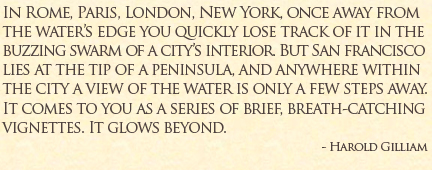F I R S T P R E V
P R E V 987
987 NEXT
NEXT LAST
LAST



Islias Creek Channel, Bayview
Driving south along San Francisco's waterfront near the Bayview district, you'll cross over a rundown industrial channel. What most don't realize is that the short waterway is all that remains of of Isias Creek, once, the largest body of water in San Francisco, covering nearly 5,000 acres. Hundreds of years ago Ohlone Indians harvested wild cherries, mussels, clams, and shrimp on its shores which ran from the Bay all the way to the southern slopes of Twin Peaks, four miles away. Later, Islais Creek provided fresh water to the friars of Mission Dolores and irrigation to the settlers of early San Francisco.
Unfortunately the Gold Rush was hard on the creek as the dozens of Butchertown slaughterhouses located here dumped their offal and garbage into the waterway. Following the 1906 earthquake, the city voted to cover 90% of the creek with earthquake debris, reducing it to a culvert running underground from here to Glen Park in the city's center. The remainder was turned into an industrial shipping channel. Over the coming years the channel became home to the largest copra coconut processing plant in the U.S. as well as the largest sardine canning industry in the world.
Today, the processing plants are gone and local civic groups such as Friends of Islais Creek are working to improve the condition of the creek and nearby areas. Working with groups such as the Sierra Club, Friends of the Urban Forest, and the Port of San Francisco, the area has started to improve. Recently the Hawaiian Outrigger Canoe Club announced they were moving to the channel and there are plans to build parks, boat docks, and a promenade. Fittingly, a museum and wildlife sanctuary named for the creek's original inhabitants, the Ohlone, is also being built.
[
MAP M-16 ]